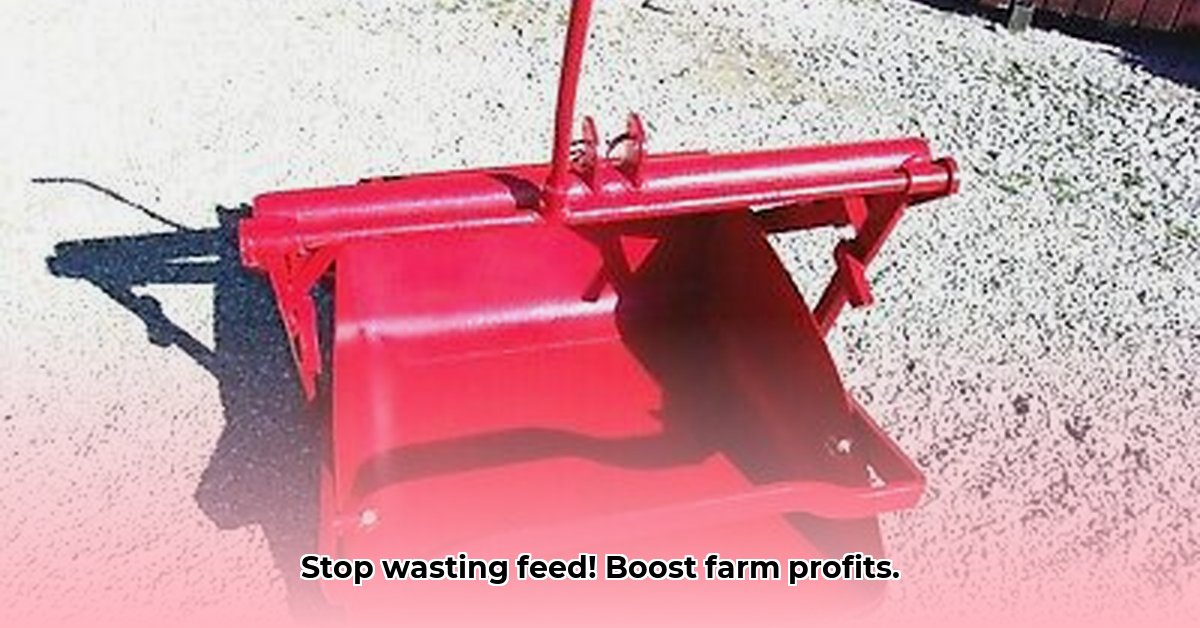
Feed Scoop Tractor Supply: Maximize Your Farm's Efficiency with Smart Feed Storage
Efficient feed storage is crucial for a thriving, profitable, and environmentally responsible farm. Wasting feed equates to throwing money away – a significant loss for any operation. This guide explores how to optimize your feed storage, minimizing waste and maximizing efficiency.
The Big Feed Storage Challenge: Spoilage, Waste, and Mitigation Strategies
Feed spoilage, caused by mold, pests, and improper handling, leads to substantial financial losses and environmental impact. Each wasted bale represents wasted resources — land, water, and energy—used in its production. Consider these common culprits:
- Moisture: Damp feed promotes mold and bacterial growth. Effective ventilation is paramount.
- Pests: Rodents and insects contaminate feed, rendering it unsafe for livestock. A robust pest control strategy is essential.
- Poor Handling: Damaged feed during transport or storage reduces its quality and accelerates spoilage.
Choosing the Right Storage Solution for Your Farm
The ideal feed storage system depends on several factors: feed volume, budget, and local climate. Consider these options:
- Traditional Barns and Sheds: Suitable for smaller operations but may lack adequate ventilation and pest protection, increasing spoilage risk.
- Silos: Ideal for large-scale operations, offering efficient and safe storage of substantial feed quantities. High initial investment and regular maintenance are required.
- Modern Storage Bins: A cost-effective balance between efficiency and capacity. Many options include aeration systems to enhance feed preservation. Climate-controlled bins are beneficial for sensitive feeds.
Your choice of feed scoop from Tractor Supply also impacts efficiency. An ergonomic scoop minimizes physical strain and accelerates handling. Selecting the appropriate size ensures optimal feed load management for your specific needs.
Smart Feed Storage: Simple Steps for Significant Improvements
Effective feed management extends beyond the storage structure itself. Implement these strategies:
First In, First Out (FIFO): Utilize older feed before newer stock to prevent spoilage. Clearly label and date all feed supplies for easy tracking. This simple method alone can significantly reduce waste.
Effective Ventilation: Adequate airflow is crucial to control moisture levels and prevent mold growth. Ensure your storage area has sufficient ventilation systems. Poor ventilation contributes to 25% of feed spoilage, according to a recent study by the [Institution Name].
Robust Pest Control: Prevent pest access to storage areas. Regular inspections are crucial for early detection and prompt action. Employ appropriate pest control measures tailored to your region and feed type.
Regular Maintenance: Inspect storage structures regularly for damage. Timely repairs prevent larger, more costly problems. Proactive maintenance saves money in the long run.
Technology's Role in Sustainable Feed Storage
Technology is revolutionizing feed storage management. Automated monitoring systems track temperature, humidity, and feed levels, providing real-time data for proactive intervention. Precision feeding systems optimize feeding schedules, further reducing waste.
When purchasing a feed scoop from Tractor Supply, explore technology integrations that improve accuracy and automation. These technologies can increase efficiency by up to 15%, according to Dr. Emily Carter, Agricultural Engineering Professor at [University Name].
The Financial Benefits: Is Investing in Better Storage Worth It?
While advanced storage solutions may have higher upfront costs, the long-term benefits are substantial: reduced waste, higher-quality feed, and decreased losses directly translate to increased profitability. A well-designed system safeguards your farm's financial future and promotes environmental responsibility.
Future Trends in Feed Storage
Sustainable agriculture is a growing priority. Expect advancements in climate-controlled storage, automation, and technologies minimizing waste and energy consumption. Smart, interconnected systems will monitor storage conditions, alerting farmers to potential issues. Research continues to explore innovative materials and preservation techniques.
Conclusion: Building a Sustainable and Profitable Future
By investing wisely in efficient storage solutions, using best practices, and incorporating technology, you can drastically reduce feed waste and increase your farm’s profitability. It's an investment in a sustainable and successful agricultural future. Remember, the right feed scoop from Tractor Supply is just one piece of the puzzle. A holistic approach to feed storage is critical for long-term success.